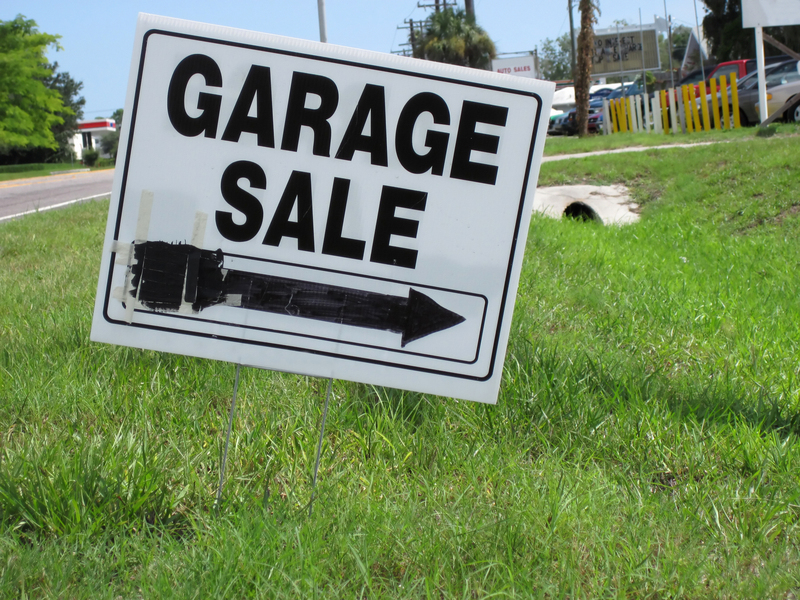Guidelines for Disposing of PPE Waste Responsibly
Personal Protective Equipment (PPE) has become an essential part of both healthcare and daily life, especially since the onset of the COVID-19 pandemic. With the extensive use of masks, gloves, face shields, and gowns, responsible disposal of PPE waste is crucial not only to safeguard human health but also to protect our environment. Improper disposal can lead to the spread of disease, hazardous pollution, and harm to wildlife. This comprehensive guide covers the best practices and compliant procedures for disposing of PPE waste responsibly, ensuring both environmental and public safety.
Why Responsible PPE Waste Disposal is Essential
As millions of people use PPE every day, the volume of disposable masks, gloves, gowns, and face shields is rising dramatically. Disposing of these items incorrectly--such as tossing them onto streets, waterways, or in the wrong waste streams--can cause significant environmental and health risks. Key reasons for proper PPE waste management include:
- Preventing virus and bacteria transmission from contaminated PPE items.
- Protecting sanitation workers from exposure to infectious materials.
- Reducing environmental pollution caused by plastic-based PPE components.
- Safeguarding wildlife from ingesting or entangling in PPE waste.
- Supporting recycling efforts and maintaining the efficiency of waste management systems.

Types of PPE Waste and Their Hazards
Before discussing the guidelines for disposing of PPE waste, it's important to identify the different types of PPE and their hazards:
- Masks: Single-use face masks, such as surgical and N95 respirators, are made of non-biodegradable plastics and can harbor pathogens after use.
- Gloves: Disposable latex, nitrile, or vinyl gloves are often contaminated and difficult to recycle.
- Gowns: Disposable medical gowns are used in healthcare and carry a risk of contamination.
- Face shields and goggles: Usually made of plastic; if contaminated, they need careful handling.
*Improper handling of these items may help pathogens to survive for hours or days, posing direct risks to anyone coming in contact with them.*
General Guidelines for Responsible PPE Waste Disposal
The following best practices apply to all sectors--individuals, households, healthcare facilities, and organizations--to ensure the environmentally safe and responsible disposal of PPE waste:
1. Segregate PPE Waste at the Source
- Never mix PPE waste with regular recyclables like paper, plastics, or glass. These items are often contaminated and cannot be reused or recycled through standard waste systems.
- Use a separate, clearly marked bin designated for PPE waste. For example, label the bin "PPE Waste Only - Do Not Recycle" to reduce confusion.
- Double-bag PPE waste where possible to prevent leakage or accidental exposure.
2. Handling and Storage Precautions
- Always wash your hands before and after handling used PPE waste to reduce the risk of cross-contamination.
- Avoid crushing or compacting PPE as this can release trapped pathogens or puncture the protective barriers.
- Keep the designated PPE bin in a secure area, away from children and animals.
3. PPE Waste Disposal for Individuals and Households
- Follow local regulations: Some municipalities have issued specific guidance on PPE waste disposal. Check with your local waste authorities.
- Seal used PPE waste in a plastic bag before discarding in general waste, unless a PPE-specific collection is available.
- Do not attempt to recycle disposable PPE like masks and gloves unless part of a certified PPE recycling program.
- Never flush PPE items down the toilet as they can cause blockages and pollute waterways.
4. Safe Disposal in Workplaces and Public Spaces
- Install dedicated PPE disposal bins in entryways, cafeterias, and high-traffic areas.
- Empty bins regularly and replace liners to avoid overflow and minimize contamination.
- Train staff about the importance of proper PPE waste segregation and the dangers of mishandling contaminated items.
5. Healthcare Facilities: Special Considerations
- Follow strict biohazard protocols for all PPE waste generated in medical settings.
- Use color-coded bags (e.g., red or yellow) for infectious waste according to local or national guidelines.
- Arrange for collection by licensed medical waste handlers who will treat or incinerate PPE waste in compliance with health and environmental regulations.
- Do not dispose of medical PPE waste in general waste streams.
What Happens to PPE Waste after Collection?
PPE waste collected as part of a responsible disposal program follows several possible treatment and processing routes:
- Incineration: This is the most common method, especially for healthcare-generated PPE, as it destroys pathogens and reduces waste volume.
- Landfilling: Non-hazardous PPE sometimes ends up in landfills, which is acceptable if properly sealed to prevent scavenging and environmental exposure.
- Specialized recycling: Some specialized programs can recycle certain types of PPE, such as clean masks or face shields, though this requires proper pre-sorting and decontamination.
*Always research if local or national authorities offer PPE waste recycling programs and participate whenever possible to further reduce the environmental footprint of PPE disposal.*
Dos and Don'ts of PPE Waste Disposal
Dos:
- Wear gloves when handling used PPE waste if possible.
- Immediately dispose of used PPE in designated containers; do not leave items lying around.
- Clean hands thoroughly with soap and water or hand sanitizer after discarding PPE.
- Educate family and colleagues about the importance of proper PPE waste management.
Don'ts:
- Don't drop masks, gloves, or gowns on the ground, in public spaces, or on streets.
- Don't mix PPE waste with household recycling such as bottles or cans.
- Don't burn PPE waste at home--this can release toxic fumes.
- Don't try to reuse single-use PPE unless it is specifically designed for multiple uses and is properly sanitized.
Innovative Solutions and Emerging Practices for Responsible PPE Waste Management
Around the world, innovative approaches to PPE waste reduction and recycling are being developed. Some companies and research organizations are piloting ways to collect, clean, and recycle certain types of PPE waste, turning it into construction material, energy, or even new products. If you have access to such initiatives, participating can further lessen the direct environmental impact of your PPE usage.
- PPE take-back programs: Some companies like TerraCycle run mail-in mask recycling schemes for both individuals and workplaces.
- Eco-friendly PPE: New biodegradable or reusable PPE designs are becoming available, reducing long-term waste.
- Public awareness campaigns: Support and join local drives to educate people on safe PPE disposal methods.
*Staying informed about local options and supporting these solutions helps build a circular economy and minimizes the footprint of disposable PPE.*
The Environmental Impact of Improper PPE Waste Disposal
Improper PPE disposal doesn't just look unsightly--it can have far-reaching consequences for the environment, including:
- Ocean and river pollution: Masks and gloves flushed or tossed onto streets often end up in waterways, threatening marine life and contaminating food sources.
- Plastic microfibers: PPE items break down into micro-plastics over time, which enter the ecosystem and even our food chain.
- Soil contamination: Chemicals leaching from PPE in landfills can contaminate soil and groundwater.
- Wildlife harm: Birds, fish, and animals may ingest or become entangled in improperly discarded masks and gloves, leading to injury or death.
By following the guidelines for responsible PPE disposal, we play a key part in protecting both the natural world and our communities.
Best Practices for PPE Waste Reduction
As the old saying goes, "Reduce, Reuse, Recycle". While PPE is primarily designed for single-use and safety, there are still ways to minimize waste:
- Opt for reusable PPE (such as washable cloth masks and gowns) when safe and appropriate for the setting.
- Use only what is necessary: Avoid excessive or redundant PPE usage, especially when guidelines allow for reduction.
- Support and purchase eco-friendly PPE products made from sustainable materials.
- Encourage hospitals and workplaces to implement PPE recycling or circular economy initiatives.

Frequently Asked Questions: How to Dispose of PPE Responsibly
Can I recycle PPE waste?
Most single-use PPE (masks, gloves, gowns) cannot be recycled via household or municipal systems due to contamination risks. However, specialized PPE recycling programs are emerging--research options in your area or ask your workplace/environmental department.
What should I do if I see PPE litter in my community?
If you notice PPE waste on the streets or in public spaces, wear gloves (or use a tool) to pick it up and place it into a sealed waste bag. Dispose of it safely in a non-recyclable bin. Always wash your hands thoroughly after handling.
How long do viruses survive on used PPE?
According to scientific studies, viruses can remain viable on plastic surfaces (such as those in masks and gloves) for hours to days. This reinforces the importance of handling and disposing of PPE responsibly.
Are reusable PPE alternatives better for the environment?
Reusable PPE, like cloth masks and gowns, help reduce waste if they can be safely disinfected between uses. Always follow manufacturer and health guidelines to ensure that reusable PPE is used effectively without increasing infection risk.
Conclusion: Shared Responsibility in PPE Waste Disposal
The enormous increase in PPE usage has been critical for public health but also presents new environmental challenges. By following guidelines for disposing of PPE waste responsibly, we can all minimize risks to people, wildlife, and the planet. Whether at home, at work, or out in public, take the extra care to manage PPE waste properly--use separated bins, seal used items, and educate others about the importance of these small yet powerful actions.
*Together, we can ensure that our efforts to protect ourselves and each other from infection do not come at the expense of our environment or future generations.*
```